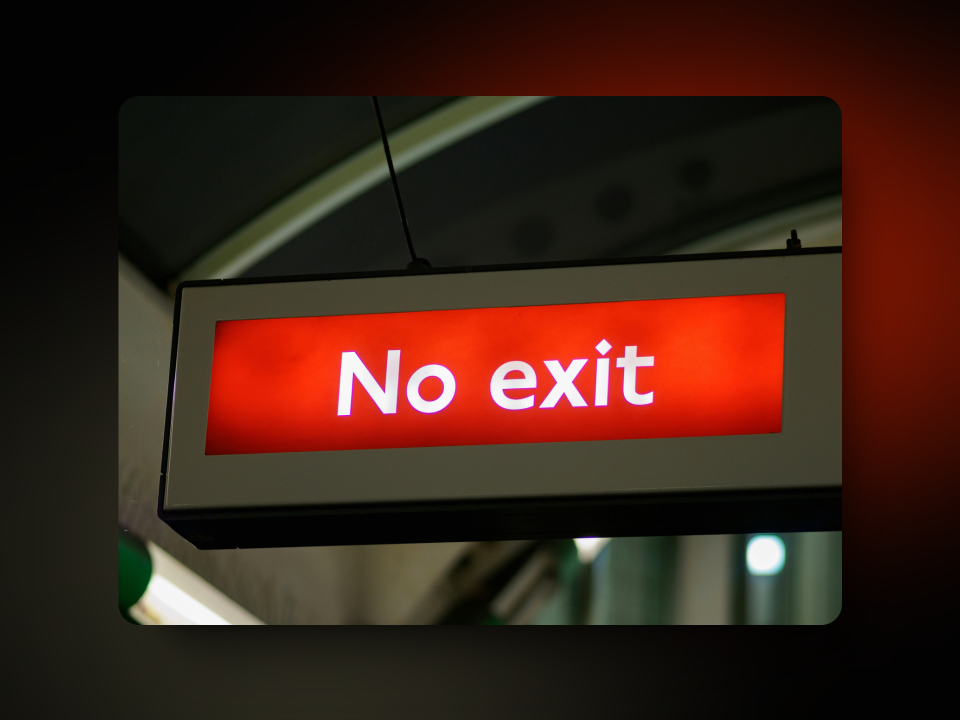
Your Website Is Not an Exit
In the digital age, a website is much more than a digital storefront; it’s the central hub of your online presence. Businesses invest heavily in design, SEO, and content strategies to guide users to their websites. However, one common misstep can undermine all that effort: placing social media icons prominently in the website header. While social media is essential for driving traffic, turning around and encouraging visitors to leave your website to explore your social platforms is akin to welcoming customers into your store, only to direct them out the door with a shiny distraction.
The ultimate goal of social media is to direct users to your website, where they can engage more deeply with your brand, explore your services, and take meaningful actions like purchasing or contacting you. But when social links occupy prime real estate at the top of your website, they act as tempting escape hatches, luring visitors away before they can connect with what truly matters.
Your Website as the Destination, Not the Departure Point
Think of your website as the final stop on a carefully planned journey. Every ad campaign, social post, or email is crafted to draw visitors to this central location. Redirecting them to social media from your website reverses this flow, undermining the intent behind your digital marketing strategy. Once users are back on platforms like Instagram or Facebook, their attention is no longer yours to command. They are bombarded with other brands’ content, friend updates, and algorithmically curated distractions, leaving your carefully designed website forgotten in an open browser tab.
This dynamic parallels the brick-and-mortar retail experience. Imagine a shopper entering your store, only to find a flashy display urging them to visit a competing mall. They might leave with the best intentions of returning but are far more likely to get sidetracked. Your store – and by extension, your opportunity to build a lasting connection – is relegated to the back of their mind.
The Illusion of Connectivity
Businesses often argue that including social icons in the header creates a sense of connectivity, showing that their brand is active and approachable. While this is valid, placement matters. Social media links don’t need to occupy the most visible and action-driven part of your website. Placing them in the footer or contact section ensures they’re available for those who actively seek them without becoming a distraction for visitors engaging with your primary content.
Visitors arriving on your site should feel guided toward valuable interactions, such as exploring your services, subscribing to your newsletter, or completing a purchase. Offering them an exit before they’ve had a chance to engage is counterproductive to these goals.
Retaining Focus Where It Belongs
When you design your website, every element should serve the core purpose of keeping users engaged and moving toward your desired outcomes. Whether that’s a blog post like this one or a product landing page, your website’s design must prioritize clarity and focus. Social media links in the header disrupt this focus. They encourage aimless clicking rather than intentional engagement.
Moreover, the analytics bear this out. A website’s bounce rate – the percentage of visitors who leave without taking further action – can spike when users are tempted to follow external links too early in their journey. Keeping visitors on your site longer increases the chances of conversion, whether that’s filling out a contact form, downloading a guide, or purchasing a product.
Rethinking Social Media Integration
Social media can still play a vital role in your overall digital strategy, but it should be integrated thoughtfully. Rather than urging visitors to leave your site, use social media as a channel to amplify your website’s content. Share blog posts, promote new products, and run campaigns that bring users back to your website. This approach ensures that social media works for your website, not against it.
If you want to highlight your social presence on your website, consider embedding feeds or featuring testimonials from social platforms. These elements keep users engaged within your website while still showcasing your activity on other channels.
Building a Strong Online Ecosystem
Ultimately, the success of your digital strategy hinges on understanding the role of each platform in your ecosystem. Your website is the centerpiece, the ultimate goal of your marketing funnel. Every social post, email campaign, or online ad should be a stepping stone guiding users toward this destination.
By minimizing distractions and keeping visitors focused on your website’s value, you can ensure that your digital marketing efforts yield the results you need. So, resist the urge to place social media icons in your website header. Instead, give your visitors a reason to stay, explore, and connect deeply with your brand.
Wedigro understands the nuances of creating websites that convert visitors into loyal customers. Follow us on Facebook, Instagram, X, and LinkedIn for more expert insights and tips to grow your online presence.
